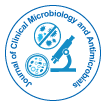

Commentary - (2025)Volume 9, Issue 1
The COVID-19 pandemic, caused by the novel coronavirus SARS-CoV-2, created unprecedented global disruption, straining healthcare systems and triggering shifts in clinical management across all domains of medicine, including antibiotic usage. Although COVID-19 is a viral illness, a significant proportion of hospitalized patients, particularly those in intensive care units, received empirical antibiotic therapy. This widespread use was driven by initial uncertainty regarding bacterial co-infections, the difficulty of distinguishing viral from bacterial pneumonia, and a desire to preempt secondary infections in critically ill patients. As a result, the pandemic catalyzed a surge in antibiotic prescriptions, particularly during the early waves, with consequences that have altered the landscape of antimicrobial resistance (AMR) and stewardship globally.
Antibiotic overuse during COVID-19 was particularly pronounced during hospital admissions, where empirical administration of broad-spectrum antibiotics such as cephalosporins, fluoroquinolones, and carbapenems became commonplace. Studies revealed that while bacterial co-infections in COVID-19 patients were relatively rare—estimated at 8%–10%—the rate of antibiotic prescribing exceeded 70%–80% in many settings. This disparity underscored and disconnect between clinical need and practice, compounded by diagnostic uncertainty and the absence of rapid, accurate tools to rule out bacterial involvement. In the absence of bacterial culture confirmation, many clinicians defaulted to antibiotic therapy, contributing to an avoidable acceleration in resistance trends. The indiscriminate use of antimicrobials in COVID-19 management further highlighted pre-existing gaps in antimicrobial stewardship, particularly in resource-limited settings where laboratory capabilities are limited.
One of the most pressing outcomes of increased antibiotic use during the pandemic has been the rise in resistant infections, both in hospitals and the community. Multiple surveillance reports during and after peak COVID-19 waves documented an uptick in multidrug-resistant organisms (MDROs), including extended-spectrum beta-lactamase (ESBL)-producing Enterobacterales, carbapenem-resistant Acinetobacter baumannii, and methicillin-resistant Staphylococcus aureus (MRSA). Intensive care units, overwhelmed with COVID-19 patients, saw significant increases in ventilator-associated pneumonia (VAP) and bloodstream infections caused by resistant pathogens. Prolonged hospital stays, invasive procedures, and frequent use of immunomodulators created an ideal environment for nosocomial transmission and selection of resistant strains. In Cyprus and many other European nations, national AMR surveillance data indicated a concerning spike in resistance rates, especially to last-line antibiotics, stressing the need for robust infection control and stewardship interventions.
The pandemic also disrupted essential AMR surveillance and stewardship programs. In many institutions, antimicrobial stewardship teams were reallocated to COVID-19 response efforts, and routine audits or feedback mechanisms were suspended. Similarly, diagnostic microbiology laboratories faced staffing shortages and supply chain disruptions, leading to delays in culture and sensitivity reporting. These interruptions contributed to prolonged empirical therapy and hindered the ability to de-escalate antibiotics based on evidence. Furthermore, the widespread use of telemedicine, while critical for maintaining continuity of care, made clinical assessment of infections more challenging, sometimes resulting in unnecessary antibiotic prescriptions in outpatient settings.
However, the pandemic has also provided valuable lessons and highlighted critical areas for improvement. First, it has underscored the importance of integrating antimicrobial stewardship into emergency preparedness plans. Stewardship should not be sidelined during health crises but reinforced through digital tools, remote consultation, and rapid diagnostics. Second, the role of data-driven surveillance has become more apparent than ever. Real-time monitoring of antibiotic prescribing patterns and resistance trends can help guide policy and clinical decisions during public health emergencies. Third, the pandemic has reinforced the urgent need for investment in rapid diagnostic tests that can distinguish viral from bacterial infections at the point of care. Such tools would not only reduce inappropriate antibiotic use but also preserve the efficacy of existing antimicrobials.
The experience of Cyprus during COVID-19 mirrors that of many other countries—overprescription of antibiotics during early response phases, rising AMR rates, and setbacks in surveillance and stewardship. However, in the aftermath, several health systems have begun to rebuild with a renewed focus on integrated AMR control strategies. Post-pandemic guidelines now emphasize the judicious use of antibiotics in viral respiratory infections, supported by clearer diagnostic algorithms and antimicrobial protocols tailored for COVID-19 and similar syndromes. The World Health Organization and regional health authorities have also reiterated the need to reinforce One Health approaches to tackle AMR, recognizing the interplay between human health, agriculture, and the environment.
In conclusion, the COVID-19 pandemic has had a profound impact on antibiotic usage and resistance patterns worldwide. While the initial overreliance on antibiotics was understandable given the uncertainty and severity of the disease, it revealed systemic vulnerabilities in stewardship and diagnostic infrastructure. The increase in multidrug-resistant infections and the disruption of surveillance programs are clear warnings of the long-term consequences of unchecked antimicrobial use. Moving forward, the lessons learned from this crisis must be translated into action: Strengthening stewardship frameworks, investing in diagnostics, and embedding AMR considerations into global pandemic response strategies. Only then can we ensure that future public health emergencies do not further erode the effectiveness of our limited antimicrobial arsenal.
Citation: Charalambous A (2025). Impact of COVID-19 on Antibiotic Usage and Resistance Patterns. J Clin Microbiol Antimicrob.09:220.
Received: 03-Mar-2025, Manuscript No. JCMA-25-37631; Editor assigned: 04-Mar-2025, Pre QC No. JCMA-25-37631 (PQ); Reviewed: 18-Mar-2025, QC No. JCMA-25-37631; Revised: 25-Mar-2025, Manuscript No. JCMA-25-37631 (R); Published: 01-Apr-2025 , DOI: 10.35248/ JCMA.25.09.220
Copyright: 2025 Charalambous A. This is an open-access article distributed under the terms of the Creative Commons Attribution License, which permits unrestricted use, distribution, and reproduction in any medium, provided the original author and source are credited.